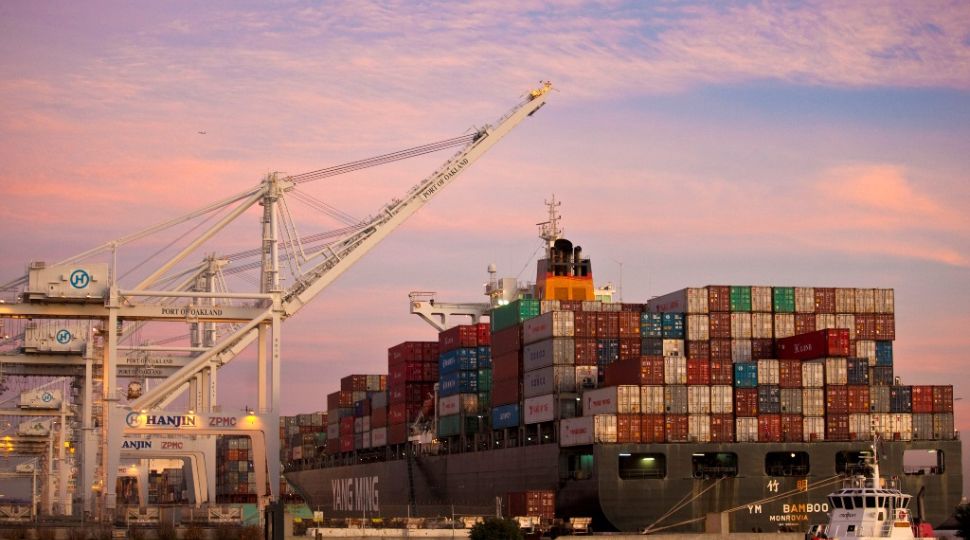China Grapples with Changing U.S. Trade Policy

In July and August, the U.S. imposed an additional 25% tariff (added to the basic tariff) on $50 billion in products imported from China. In response, China introduced duties on goods of the same value imported from the U.S. In the face of fruitless attempts to end the trade war, on 24 September, the U.S. imposed more charges (10%, which will be raised to 25% from the beginning of 2019) on $200 billion worth of goods imported from China, which retaliated with charges (5% and 10%) on $60 billion in U.S. goods and cancelled high-level talks on the dispute. China has also filed a lawsuit at the WTO against the latest U.S. round of tariffs. Under those circumstances, the U.S. does not rule out the imposition of duties on all imports from China.
China’s Trade Policy Assumptions
The Chinese economy is still based on exports and investment. China is the biggest global exporter ($2.26 trillion in 2017) and is second only to the EU in terms of trade volume ($4.1 trillion; EU, $4.2 trillion). Trade is responsible for more than a third of the value of the Chinese economy, which is more than for the U.S. (less than 30%). Although this model is coming to its end (due to, e.g., rising labour costs) and efforts to increase domestic consumption and innovation, exports will continue to play an important role in the Chinese economy for a while. Income from exports is necessary to maintain the country’s high GDP growth and employment rate during the transformation period. The country has implemented the “Made in China 2025” programme to try to gain a leading position in the high-tech industry. To achieve this goal, China needs technology from developed countries, which is why it invests in those markets. At the same time, China is slightly easing access to its own market, still heavily regulated, which should enable domestic companies to prepare for international competition. In these ways, China is selectively applying the principles of free trade.
Threats from U.S. Protectionism
The customs battles may lead to a drop in Chinese exports. The U.S. is China’s largest export market ($506 billion in 2017). The tariffs will worsen the condition of Chinese companies and likely increase unemployment. That would have a negative impact on the state’s budget revenues and economic growth, which is estimated to weaken by 0.5-0.6 of a percentage point next year. A prolonged dispute with the U.S. may compel both Chinese and foreign enterprises to relocate production outside China and could weaken the yuan, leading to rising prices or difficulties for Chinese companies servicing foreign-denominated debt. The position of Chinese companies in international value chains also may be at risk, as well as the financing of projects under China’s flagship Belt and Road Initiative (BRI) or the implementation of “Made in China 2025” by restricting access to technology from the U.S. The atmosphere of uncertainty has had a negative impact on the Chinese capital market, including its stock exchanges. At the beginning of this September, the Shanghai index (SSE Composite) slumped almost to the level in January 2016, when China was struggling with a crisis in exchanges. Then, the crisis undermined confidence in the economic policy of the Chinese authorities and was one of the reasons for the slowdown in introducing market reforms.
A worse economic condition may mean a drop in living standards, which could lead to strikes (about 2,600 cases in 2016), and in the long run undermine internal stability. The authorities are highly focused on this: At the Politburo meeting of 31 July devoted to the economic situation in the second half of 2018, the “six stabilities” (employment, finance, foreign trade, capital, investment, and expectations) were highlighted as well as the “serious change of external environment”. The prolonged conflict with the U.S. may also undermine Chinese leader Xi Jinping’s “great power” policy, including the desire to reform the global economic governance system and give a greater role to China. An example of countering the Chinese policy is the U.S.-EU-Japan cooperation on WTO reform, including proposals for introducing regulations that limit government subsidies, which China uses on a large scale.
Opportunities for China
U.S. trade policy may lead China to accelerate negotiations of free trade agreements such as the Regional Comprehensive Economic Partnership, which gathers China, ASEAN, India, Japan, South Korea, Australia, and New Zealand. This would strengthen the position of Chinese companies—compared, for instance, to U.S. enterprises—in those markets. A similar goal could concern cooperation with other countries, including the BRICS group or with the EU, for example, by concluding an investment agreement. Along with China’s willingness to become involved in WTO reform and the implementation of the BRI, it is also a means to create an image of China as a defender of multilateralism and free trade.
The U.S. activities may be a chance to stimulate the pace of China’s reforms. The authorities may persuade the Chinese to consume more, for example, by increasing wages in the public sphere. China also may be more prone to increase spending on development of its own production base in high technology in order to reduce dependence on foreign suppliers. Cautious actions may indicate an attempt to test the effectiveness of its economic policy through a limited withdrawal from tightening lending or influencing the yuan exchange rate (though the yuan’s depreciation may increase the attractiveness of Chinese exports). The instability of economic relations with the U.S. may also contribute to a greater diversification of Chinese import sources.
Prospects
China simultaneously tries to retaliate and settle the dispute with the U.S. If the conflict escalates, though, it will be difficult for China to maintain its strategy of a “symmetrical response” based on retaliatory tariffs because of the disproportion in exports. Therefore, China may impose higher tariffs on certain U.S. goods. However, some of the goods imported from the U.S. (e.g., semiconductors or chips) are necessary for Chinese companies. Lower tariffs may be applied to those products than on goods that can be obtained elsewhere. It is also possible to prohibit the export to the U.S. of Chinese components and raw materials (such as rare-earth metals) necessary to U.S. value chains, or even specific products, such as smartphones. The Chinese authorities use other instruments, such as obstructing the operations of U.S. companies in China, increasing controls on them, or extending registration procedures. China may also restrict visas for U.S. citizens, as well as encourage a boycott of American products. At the same time, looser monetary and fiscal policies will support Chinese companies affected by the tariffs, for example, through tax exemptions. However, China probably will not use financial instruments at this stage, such as the sale of U.S. bonds (around $1.2 trillion), because this step may affect their price and disrupt the market, which would result in further losses for China.
China may partly meet the U.S. demands, for example, by increasing access to the Chinese market. However, this greater openness will likely be in sectors that were to be liberalised anyway due to the strong position of local companies. The Trump administration is unlikely to be satisfied with these measures, especially before the mid-term elections to Congress in November. In the short term, this means the dispute will continue. In the long term, it is possible to reach a limited agreement that both parties may present as a success. Vindication of this perspective is China’s readiness to talk about an investment agreement and even FTA with the U.S.
If the conflict is prolonged, some EU companies may begin to see losses, e.g., from increased internal competition caused by redirected exports from China and the U.S. to Europe, or breaching cooperation with American and Chinese partners in global value chains. At the same time, the dispute may lead China to open its market wider to exporters and investors, including those from EU countries. It may do this, for example, by lowering tariffs (U.S. companies affected by additional retaliatory duties will benefit to a lesser extent).
The conflict with the U.S. will not endanger Xi since he’s consolidated power by removing rivals to succession. However, if the economy deteriorates, Xi’s authority and position may be weakened. Then, one can expect the authorities to provoke nationalist sentiment to unite Chinese society against external challenges.






